Are your customers' iron tricycles rusting away in coastal towns? This leads to breakdowns, lost income, and a bad reputation for your business. Let's look at a solution that lasts.
Choose a stainless steel electric cargo tricycle for its unmatched corrosion resistance, superior long-term durability, and lower maintenance needs. It is the ideal investment for any business operating in coastal, humid, or otherwise corrosive environments where standard steel fails quickly.
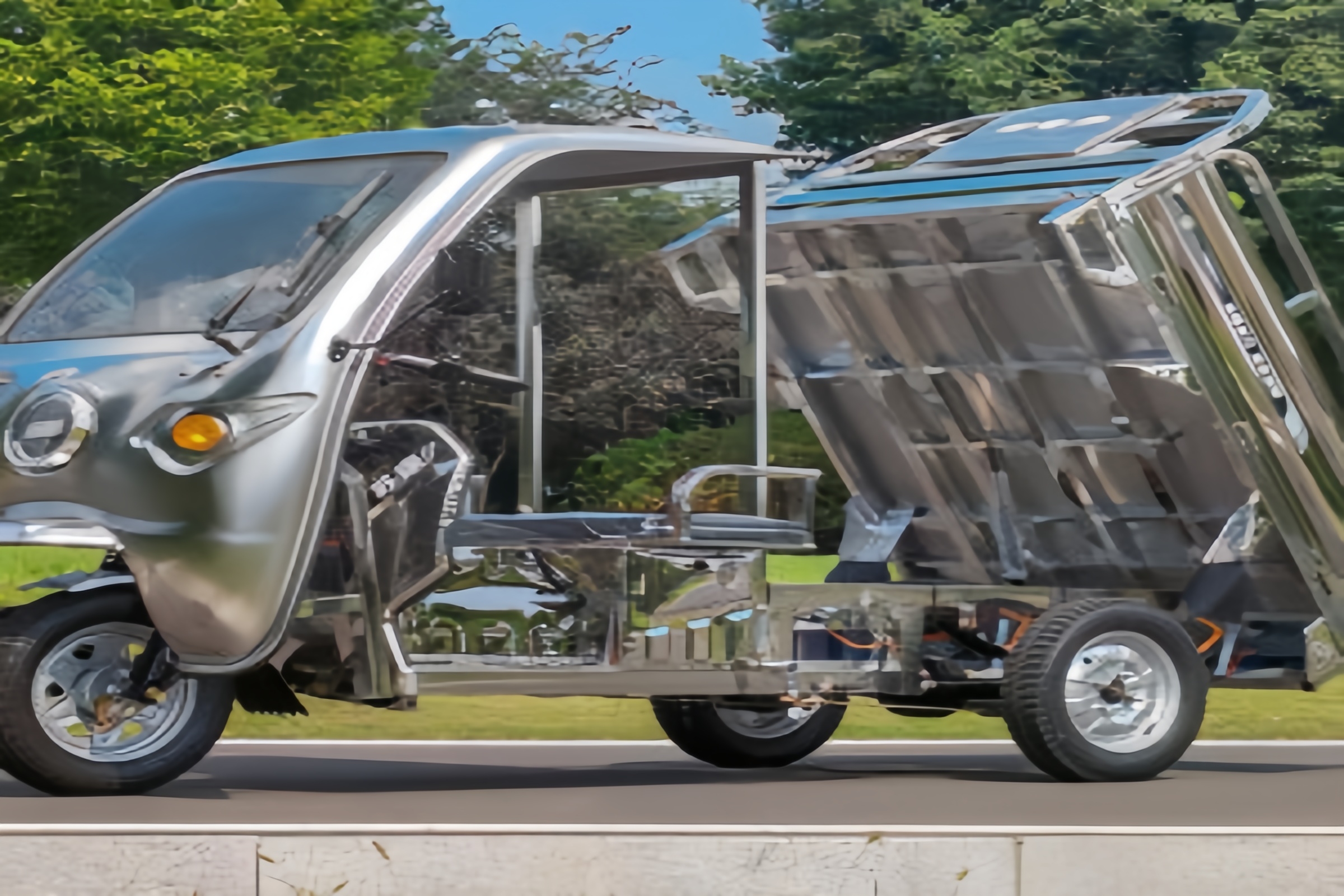
From our factory, we ship tricycles all over the world. I've noticed that our most experienced importers in coastal regions like the Philippines or equatorial Africa almost exclusively order stainless steel models, or at least models with stainless steel cargo boxes. They learned a hard lesson early on: painted iron simply cannot survive the constant assault of salt and humidity. While the initial order might be more expensive, they know that stainless steel is not a luxury—it's a necessary business tool for success in their markets.
What Are the Main Advantages of Stainless Steel Frames in Cargo Tricycles?
You know that regular iron frames look strong at first. But in humid air, they can rust from the inside out, becoming weak and unsafe. This hidden damage is a ticking time bomb.
The main advantages of stainless steel are its built-in corrosion resistance, which prevents rust without paint, its long-term structural durability, and its incredibly low maintenance. These features ensure the vehicle remains safe, reliable, and professional-looking for years.
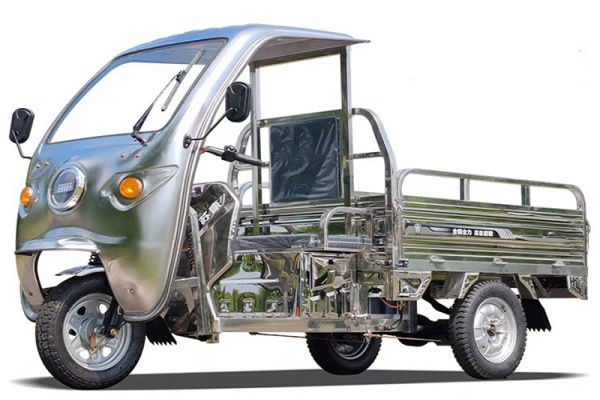
When you look at a painted iron frame and a stainless steel frame side-by-side, the real difference is not what you see—it's what you can't see. The protection on the iron frame is only skin-deep. With stainless steel, the protection is part of the metal itself. This creates three critical advantages for any commercial user who depends on their vehicle every day.
Unmatched Corrosion Resistance
Plain iron rusts when exposed to oxygen and moisture. Paint provides a temporary barrier, but the moment it gets scratched, rust begins to form and spread underneath. Stainless steel is different. It's an alloy mixed with chromium, which creates a passive, invisible layer of chromium oxide on the surface. This layer protects the steel from rust and, if scratched, it instantly reforms. It's a self-healing shield, which is essential in a place where salt spray and moisture are always present.
Lasting Strength and Durability
Rust doesn't just look bad; it is a chemical process that eats away at the metal, making it weaker. An iron tricycle that is rated to carry 500 kg might only be able to safely carry 300 kg after a few years of corrosion. The stainless steel frame maintains its original structural integrity because it isn't degrading over time. This means it offers a consistent and safe load capacity throughout its entire service life.
Low Maintenance and Professional Appearance
Maintaining an iron tricycle in a coastal area is a constant battle. It requires frequent inspections, sanding down rust spots, and repainting. A stainless steel tricycle, on the other hand, just needs to be washed. For your customers—like a seafood vendor or a resort delivery service—appearance matters. A clean, shiny tricycle looks professional and trustworthy. A rusty one does not.
How Does Stainless Steel Construction Impact Long-Term ROI for Importers?
Many importers focus only on the low initial purchase price. But this short-term thinking can be a major mistake when high maintenance and frequent replacement costs destroy profitability.
Stainless steel delivers a much higher long-term Return on Investment (ROI) by drastically reducing maintenance costs, eliminating the need for early replacement, and retaining a higher resale value. This turns the product into a more profitable asset for both you and your client.
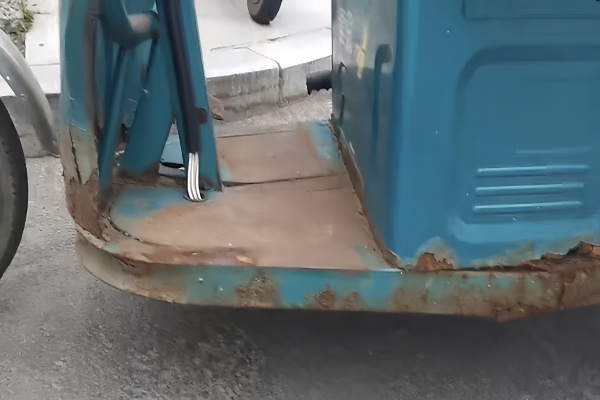
As an importer, your success depends on selling products that make your customers successful. A cheap tricycle that breaks down will only lead to warranty claims and damage to your reputation. A durable one builds trust and repeat business. The best way to understand the financial impact is to look at the Total Cost of Ownership (TCO).
Understanding the Total Cost of Ownership (TCO)
The TCO is the true cost of a vehicle over its life, not just its purchase price. Let’s compare two tricycles over five years.
| Cost Factor | Standard Iron Tricycle | Stainless Steel Tricycle |
|---|---|---|
| Initial Purchase Price | $700 | $900 |
| Annual Maintenance (Rust Repair) | $100/year = $500 | $10/year (cleaning) = $50 |
| Replacement Frame (Year 4) | $250 | $0 |
As you can see, the "cheaper" tricycle actually costs twice as much over five years. By explaining this to your clients, you are not just selling them a product; you are selling them a more profitable business decision. This builds incredible trust and positions you as an expert advisor.
Is Stainless Steel Worth the Higher Upfront Cost?
That higher price tag on a stainless steel model can make a buyer hesitate. You might even worry about losing a sale to a competitor with a cheaper, standard iron trike.
Yes, the higher cost is absolutely worth it if the tricycle will be used in a corrosive environment. The extra upfront investment is quickly paid back through savings on repairs and, most importantly, by avoiding the high cost of business downtime.
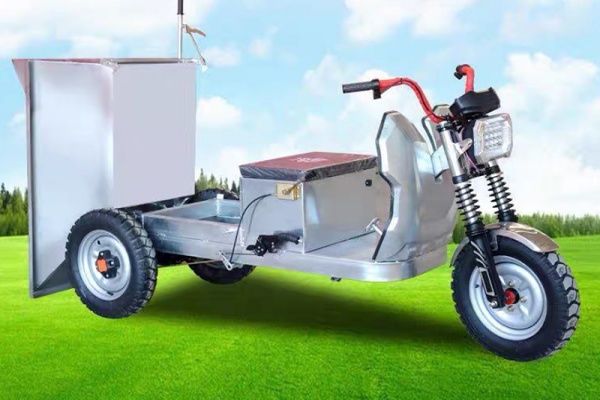
The conversation about cost should always be a conversation about value. The extra money spent on stainless steel isn't for looks; it buys reliability. For a business owner, reliability is money.
The True Cost of Downtime
Let's say your customer runs a delivery business and their tricycle is their only vehicle. If an iron frame rusts through and cracks, that vehicle is out of service for days or even weeks waiting for repair. During that time, your customer is not earning any income. They are losing business. A stainless steel tricycle that stays on the road every single day is earning them money. The prevention of even one major breakdown can easily pay back the initial price difference.
The Hybrid Solution: A Smart Compromise
We understand that a full stainless steel frame can be a big jump in price. That is why we also offer a popular hybrid option for our clients. We build a tricycle with a standard, heavy-duty painted iron frame but with a cargo box made entirely of stainless steel. This is perfect for businesses like seafood transport or sanitation, where the corrosive materials are contained within the cargo bed. It offers targeted protection where it’s needed most, at a more accessible price point.
When Should Importers Recommend Stainless Steel Cargo Tricycles to Their Clients?
Selling a more expensive product can be challenging. But if you recommend the wrong, cheaper option for a harsh environment, your client will blame you when it fails prematurely.
You should strongly recommend stainless steel to any client located within 50 kilometers of a coastline or in a very humid region. It is also a must-have for specific industries like seafood transport, sanitation departments, agriculture, and chemical distribution.
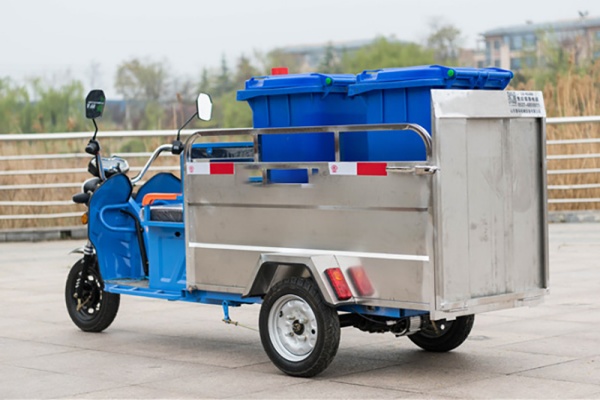
Knowing when to recommend stainless steel makes you a valuable consultant, not just a seller. I had a client in the Philippines who ran a small fishing cooperative. They were replacing their standard iron tricycles every two years because of the salt air. I convinced him to try one of our full stainless models. A year later, he called me to order five more. He said his maintenance costs had almost disappeared and his workers were happier. That is the power of matching the right product to the right environment.
Here are the key applications where stainless steel is not a luxury, but a necessity:
| Industry / Application | Why Stainless Steel is Essential |
|---|---|
| Seafood Transport | Constant exposure to salt water and organic fluids is extremely corrosive. |
| Coastal Tourism | Vehicle appearance is critical. Rusty trikes look unprofessional to tourists. |
| Sanitation / Waste | Wet and often acidic waste rapidly destroys standard painted steel. |
| Farming & Agriculture | Contact with fertilizers, wet soil, and chemicals requires a resistant material. |
| Industrial Plants | Use in chemical plants or factories with corrosive fumes demands stainless steel. |
Conclusion
For any business in a corrosive environment, stainless steel is not an expense—it is a smart investment in durability, uptime, and long-term profit. It protects the vehicle and your client's business.

